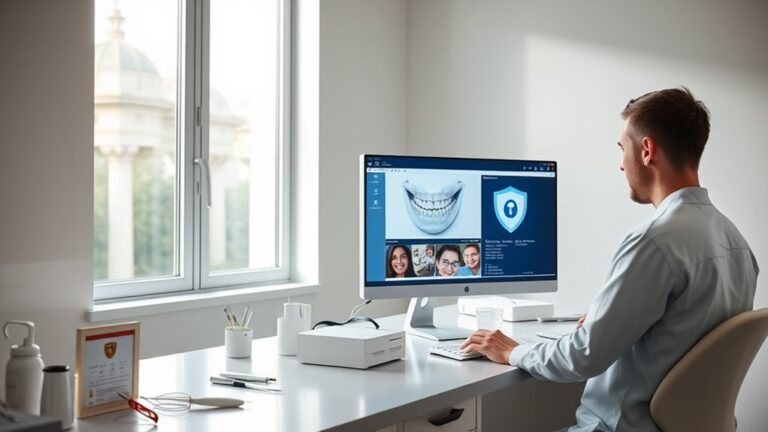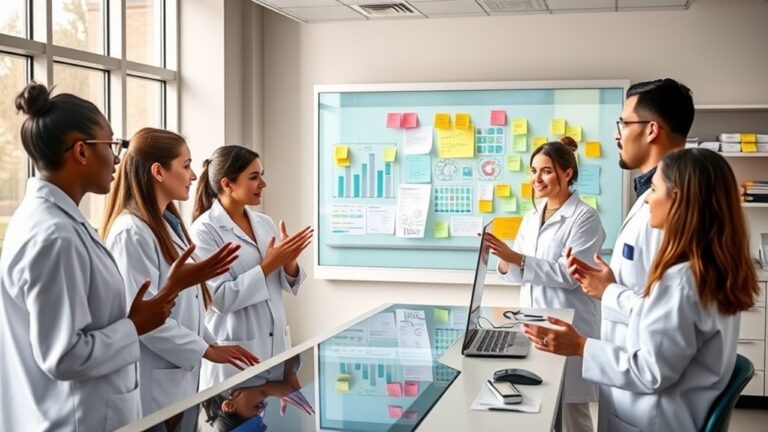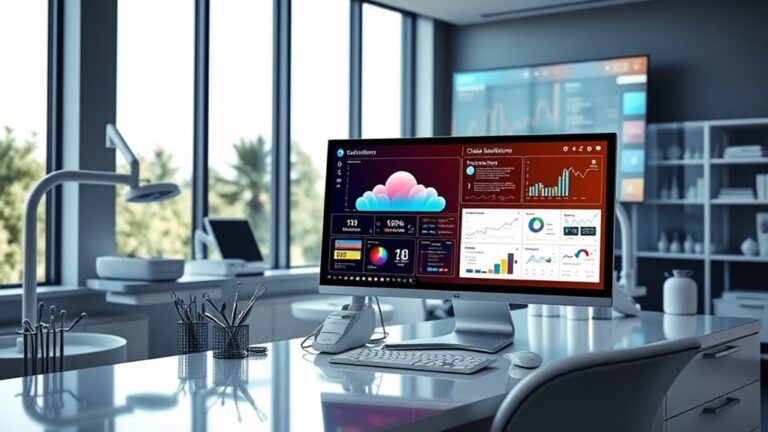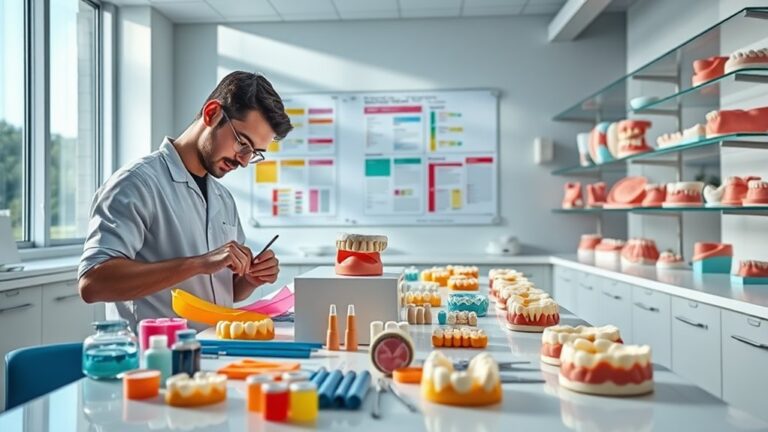Top Digital Tools to Transform Lab-Clinic Collaboration
When you think about lab-clinic collaboration, it's clear that effective communication and streamlined processes are key to improving patient outcomes. You might already be using some tools, but have you explored the full range of digital solutions available? From integrated communication platforms to advanced visualization technologies, these tools can greatly enhance efficiency and coordination between labs and clinics. However, not all tools are created equal, and choosing the right ones can make a substantial difference in your practice. If you need assistance navigating these options, feel free to reach out to us. We can connect you with experts who can provide tailored solutions for your lab-clinic collaboration needs. So, what should you consider when evaluating these options?
Integrated Communication Platforms
Integrated communication platforms are transforming the way healthcare professionals collaborate, enhancing both efficiency and patient care. These platforms enable real-time collaboration, allowing clinicians from various disciplines to discuss care plans and share clinical data seamlessly.
Whether you're using multi-disciplinary, intra-facility, or inter-facility platforms, secure messaging features guarantee that sensitive information remains confidential and compliant with HIPAA regulations. The functionality of these platforms extends beyond mere messaging, encompassing the entire information chain.
The intra-facility platforms streamline communication within a specific healthcare setting, offering easy access to file sharing, voice, and video calls. Meanwhile, inter-facility platforms facilitate connections between different healthcare providers, promoting collaboration across hospitals, labs, and pharmacies.
Specialized lab-clinic platforms further enhance communication by integrating dental labs and clinics on a single interface, making case file sharing efficient and straightforward.
With features like role-based messaging and scheduling tools, these platforms improve communication efficiency, allowing you to respond faster to patient needs. They also promote better resource allocation and streamline workflows, reducing bottlenecks.
Ultimately, by embracing integrated communication platforms, you can elevate the standard of care and improve patient satisfaction, guaranteeing that everyone involved in a patient's journey is well-informed and connected.
Digital Scanning Solutions
Digital scanning solutions are revolutionizing the landscape of laboratory diagnostics, enabling more accurate and efficient workflows. By employing advanced technologies like intelligent volumetric scanning and high-resolution imaging, you can streamline the diagnostic process. The Pannoramic 150 DX scanner, for instance, offers ultra-high-resolution scans that enhance the detail in cytology and microbiology samples.
With automated workflows, these solutions minimize human intervention, allowing for faster and more reliable results. Features such as automated tissue detection and multilayer imaging make it easier to handle complex specimens, which ultimately improves your lab's throughput. Furthermore, integrating these scanning systems with AI-powered image analysis can further enhance accuracy, providing you with a robust tool for diagnostics.
In partnership with Techcyte, Pramana's smart volumetric scanning technology allows for efficient scanning of traditionally challenging specimens, showcasing the potential to transform lab operations.
Regulatory compliance is also a key consideration. These digital solutions guarantee secure handling of patient data through HIPAA compliance and data encryption, safeguarding against data breaches. With audit trails and secure server integration, you can maintain accountability while adhering to industry standards.
Advanced Visualization Technologies
Building on the advancements in digital scanning solutions, advanced visualization technologies take your ability to analyze and interpret complex data to a new level. You can now immerse yourself in 3D environments that facilitate real-time data analysis, allowing you to walk into your data and conduct immersive simulations.
With six-degrees-of-freedom input devices and stereoscopic output, these tools provide a realistic interaction that enhances your understanding of intricate medical data. Furthermore, the Applied Visualization Laboratory (AVL) provides diverse solutions that enable scientists and engineers to interact with their data physically.
AI integration and ML applications are pivotal in streamlining clinical processes. For instance, ML reduces the time to create 3D models by up to 40%, enhancing efficiency in tasks like intracranial aneurysm analysis or liver transplant planning.
Advanced visualization platforms, such as Philips Advanced Visualization Workspace, enable collaborative research among universities, industry, and government agencies, improving patient outcomes through shared knowledge.
Moreover, using virtual reality and augmented reality technologies, you can visualize complex data in innovative ways, transforming how you communicate findings and engage with peers.
Embracing these advanced visualization technologies not only elevates your research but also strengthens the collaborative spirit essential for advancing healthcare.
Lab Planning Tools
Effective lab planning tools are essential for optimizing workflow and enhancing collaboration within clinical and research environments. To achieve this, you should focus on resource allocation and scheduling optimization.
Start by evaluating your current processes and identifying areas for improvement. Implementing scheduling automation can streamline your operations, even in labs that aren't fully digitized. Automation saves time on repetitive lab tasks, increasing efficiency and leading to a higher throughput of experiments.
Integrating new software with existing systems is vital; consider APIs and standard interfaces to guarantee a smooth shift. This integration supports capacity management, helping you prevent bottlenecks and maximize resource efficiency, particularly under tight budgets and accelerated timelines.
Utilizing project management tools like Wrike can enhance visibility and control over tasks. Customizable dashboards and real-time updates foster collaboration across departments, ensuring everyone stays informed.
Interactive Collaboration Software
Harnessing the power of interactive collaboration software can transform lab-clinic communication, fostering a seamless exchange of information and ideas. Tools like Slack and Microsoft Teams enable real-time messaging, allowing your team to discuss specialized topics and share files instantly. These platforms not only facilitate chat but also support video calls and integrate with applications like Microsoft 365, enhancing your productivity.
For collaborative project management, Asana and Trello stand out by helping you manage tasks and visualize project timelines. With these tools, you can assign responsibilities and track progress, ensuring transparency and accountability within your team. Additionally, Google Workspace offers a suite of applications for real-time document collaboration, making it easy for lab and clinic members to work together efficiently.
Utilizing these interactive collaboration tools can streamline your workflows, improve communication, and ultimately foster a more integrated approach to patient care. Whether you're sharing patient information via HIPAA-compliant platforms like TigerConnect or managing complex research data in Airtable, these resources equip you to serve others more effectively in the healthcare environment. Moreover, platforms like Doxy.me offer an intuitive telemedicine platform that enhances virtual consultations, ensuring patient privacy and compliance with regulations.
Embrace these digital tools to elevate your lab-clinic collaboration.
Patient-Centric Digital Tools
As interactive collaboration software enhances communication between labs and clinics, it also paves the way for a more patient-centric approach to healthcare. By utilizing electronic health records (EHRs), you can centralize patient data, making it accessible not just to healthcare providers but to patients as well. This accessibility boosts patient engagement, allowing you to manage and view your health statistics, consequently enhancing your control over your healthcare journey. The integration of digital infrastructure ensures that all relevant health information is seamlessly shared, further empowering patients in their healthcare decisions.
Telehealth and virtual consultations further enrich this patient-centric model. With remote video consultations, you can access healthcare services from the comfort of your home, improving convenience and satisfaction. These platforms enable real-time communication, ensuring immediate responses to your health concerns.
Mobile health apps and wearables also play a significant role. They empower you to track essential signs and receive medication reminders, increasing your engagement in your health management. Additionally, health analytics derived from these tools can provide personalized insights, guiding you toward better health decisions.
In this evolving landscape, patient-centric digital tools not only facilitate collaboration between labs and clinics but also prioritize your needs and preferences, ultimately enhancing your overall healthcare experience.
Frequently Asked Questions
How Do Digital Tools Affect Lab-Clinic Relationships Long-Term?
Digital tools markedly reshape lab-clinic relationships long-term by enhancing communication and collaboration. Through impact analysis, you'll notice improved relationship dynamics, fostering trust and efficiency that ultimately benefits patient care and operational effectiveness.
What Is the Cost of Implementing These Digital Solutions?
When considering the cost of implementing digital solutions, you'll need a thorough cost analysis. Factor in your implementation budget, including vendor fees, IT infrastructure, training, and ongoing maintenance to guarantee sustainable long-term success.
How Secure Are Digital File Transfers in Healthcare?
Digital file transfers in healthcare are secure when you use data encryption for communications. By ensuring encryption during transfers, you protect sensitive information from unauthorized access, maintaining confidentiality and compliance with regulations like HIPAA.
Can Small Labs Benefit From Advanced Digital Tools?
Absolutely, small labs can thrive with advanced digital tools. These innovations enhance collaboration efficiency and streamline data sharing, empowering you to deliver superior results while maximizing resources, ultimately benefiting your research and the wider community.
What Training Is Needed for Staff to Use These Tools?
For effective staff onboarding, focus on thorough training sessions that enhance tool usability. Engage your team with hands-on exercises and real-world scenarios to guarantee they're confident and competent in using the digital tools effectively.
Conclusion
In today's fast-paced healthcare landscape, embracing top digital tools for lab-clinic collaboration is not just an option—it's a necessity. Imagine a world where your practice thrives, leading to improved patient outcomes and streamlined processes. By integrating communication platforms, advanced visualization technologies, and patient-centric tools, you have the power to transform your team's operations.
Don't let outdated methods hold you back; instead, seize the opportunity to enhance efficiency and elevate patient care to new heights. If you're feeling overwhelmed by the changes or unsure where to start, don't hesitate to reach out to us for assistance. Our team of experts can guide you through the digital transformation process, saving you time, reducing stress, and ultimately improving your dental practice. The future of healthcare is at your fingertips, and we're here to help you navigate it.





